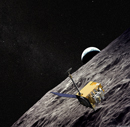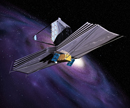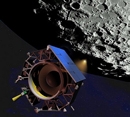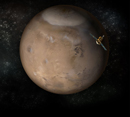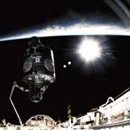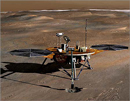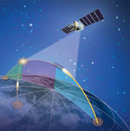| Abstract:
In the near future, teams or “swarms” of robots may regularly perform complex,
coordinated tasks (e.g., survey or reconnaissance, sensor placement, construction,
search and rescue) on Earth and in space. These operations require the development of information systems and user interfaces (UIs) that allow humans to efficiently monitor, understand, and control the activity of many robots simultaneously. This workshop is intended to identify challenges in this domain, constraints on what can be achieved, and promising approaches to this kind of Human-Robot Interaction (HRI).
Theme:
Robotics technology is advancing rapidly, resulting in robotic agents that are capable,
flexible, durable, and affordable. In the near future, teams or swarms of robots may
regularly perform complex, coordinated tasks (e.g., survey or reconnaissance, sensor
placement, construction, search and rescue) on Earth and in space. Human operators
will play an important role in the activities of these robot teams. Human involvement
may be at the level of planning and scheduling tasks to be executed by robot teams
that are almost entirely autonomous. Alternatively, human operators may interact with
robots at a lower level, making navigational choices or initiating simple tasks for robots
with limited autonomous capability. In between these extremes, a human operator may supervise a robotic team and assert control of the whole team, sub-teams, or individuals as necessary to coordinate behavior, implement strategic decisions, or to otherwise augment the robots’ capabilities with human capabilities.
In any case, the question arises: what information systems and user interfaces best
support a human operator’s interaction with a mutli-robot team or swarm? The answer
to this question must be informed by research in human-computer interaction (HCI)
and human-robot interaction (HRI) (which can provide guidance on how humans make and implement decisions and how humans and user interfaces can improve or compromise efficiency) and also by research in robotics (which can provide guidance
on the requirements of control systems, challenges associated with robot control,
and experience with successful and unsuccessful approaches to control systems and
interfaces).
Some of the factors that should drive the design and development of systems and
interfaces for multi-robot control are also present for single-robot control. For example,
a human operator needs information about the actions or tasks that are possible for a
robot (e.g., what commands are acceptable), information about the robot’s state (e.g.,
power, position of actuators, instrument function), and information about the robot’s
environment (e.g., instrument readings, sensor data).
When multiple robots are present in single operation, additional considerations must
shape the operator’s control systems and interfaces. For example, if the actions of robot team members are tightly coupled (e.g., formation flying, coordinated grasping) then the human operator’s task is different than if the robots’ actions are loosely coupled (e.g., flocking, collective but uncoordinated mapping) or are completely independent, merely sharing an operational environment. Adding to this complexity is the possibility that the robots on a single team may be heterogeneous both in their capabilities and in the extent to which they couple their behaviors to that of other team members.
An information system designed to provide operator control of a robotic team might be
considered successful if it accounted for factors like those mentioned above in a single
context. That is, a system and interface might be designed to work well with a specific
robot team. However, there are a number of potential advantages to designing more
general systems and interfaces that could apply to a broad variety of teams (offering
flexibility in team composition in terms of the types and numbers of robots). For example, there is significant potential for the accumulation and preservation of operator expertise over multiple operations if those operations employ a common approach to robot team command and control. In addition, reuse of a single system might provide cost savings (or other pragmatic efficiencies) to organizations that run several robotic operations.
This workshop is intended to bring together researchers from HCI, HRI, and robotics
to discuss the factors that should shape the design and development of information
systems and user interfaces to control multi-robot teams. To that end, workshop
participants will identify challenges in this domain, constraints on what can be achieved, measures or criteria for evaluation of systems, and promising approaches to
this kind of Human-Robot Interaction (HRI).
Goals:
Identify problems or challenges associated with command and control of robot
teams or swarms in existing or novel operations.
- Propose solutions or general approaches to problems associated with existing or novel operations concepts for robot teams or swarms.
- Suggest measures or criteria for evaluating different approaches to the control of robot teams or swarms.
- Describe how past or current operations involving single robots can inform an
approach to controlling robot teams or swarms.
- Explore user interface and/or information systems concepts that solve (or
attempt to solve) problems analogous to those associated with existing or novel
operations concepts for robot teams or swarms.
4. Short statement discussing the relevance of the workshop to the field of IT for
space missions;
The use of robotic agents is now and will continue to be a crucial component to space
mission success. Effective HRI systems are an integral aspect of any larger IT effort
supporting space exploration.
5. The desired minimum and maximum number of workshop participants - please
also state and justify the expected number of participants (to help determine
whether the workshop is also financially feasible);
No fewer than 8 and no more than 16 papers will be accepted. Our goal is to allow for
significant discussion of each paper (or each set of papers on a common topic). We will
limit the workshop to a smaller number of papers to allow for that discussion.
6. The participant solicitation and selection process (also whether open/closed);
This workshop will use an open solicitation for papers. Submissions will be refereed by
the program committee.
7. A brief description of each organizer's background, including relevant past
experience in organizing workshops and contact information;
Don Kalar holds a B.S. in Cognitive Science with a Specialization in Computing and
a Ph.D. in Cognitive Neuroscience from the University of California, Los Angeles.
Collin Green holds a B.S. in Psychology from the University of Oregon, and a Ph.D.
in Cognitive Neuroscience from the University of California, Los Angeles. Both are
researchers in the Human-Computer Interaction Group, part of the Human-Systems
Integration Division in the Exploration Technology Directorate at NASA Ames
Research Center. The Ames HCI group designs and develops information systems
to support systems engineering, anomaly resolution, safety & mission assurance, risk
management, and planning & scheduling.
Dr. Kalar has reviewed manuscripts for and has served as an assistant program
committee member for the ACM Conference on Human-Computer Interaction (CHI).
He is a member of the Vision Sciences Society (VSS) and the Organization of Human
Brain Mapping (OHBM).
Dr. Green has reviewed manuscripts for a number of scholarly journals (including
Cognitive Science, Experimental Psychology, the International Journal of Human-
Computer Studies, and the Journal of Experimental Psychology: General) and
conference proceedings (including those for the Annual Meeting of the Cognitive
Science Society, the the European Cognitive Science Conference, and the ACM
Conference on Human-Computer Interaction (CHI)).
8. A preliminary version of the call for workshop papers that the workshop
organizers intend to use;
Anticipated submissions are brief papers (three to five pages in length) which describe
open problems and/or proposed solutions; lessons learned; research in a preliminary,
ongoing, or mature state. Papers should address one or more of the following, as
relevant to the workshop theme:
- Visualization
- Situational awareness
- Command and control
- Signalling, communication, or latency
- Identification and management of emergent behavior
- Management of teams with heterogeneous functionality (by design or defect)
- Planning
- Interrupted tasks and transfer of operator control
- Training and expertise
- Evaluation of systems or interfaces
Authors of accepted papers should prepare a ten to fifteen minute presentation based on the content of their paper to provide the basis of group discussion.
Organization:
Session Chair(s): Don Kalar, NASA ARC, USA, donald.j.kalar@nasa.gov
Collin Green, NASA ARC, USA, collin.b.green@nasa.gov
Committee: Collin Green, NASA ARC, USA
Don Kalar, NASA ARC USA
Terry Fong, NASA ARC USA
Greg Trafton, Naval Research Laboratory,
NCARAI Intelligent Systems (tentative)
Jay Shively, U.S. Army Research, Engineering, and Development Command - Aeroflightdynamics Directorate
Jessie Y.C. Chen, U.S. Army Research Laboratory - Human Research and Engineering Directorate
Mark Campbell, Cornell University - Sibley School of Mechanical and Aerospace Engineering (tentative)
Chris Miller, Chief Scientist at Smart Information Flow Technologies
|






